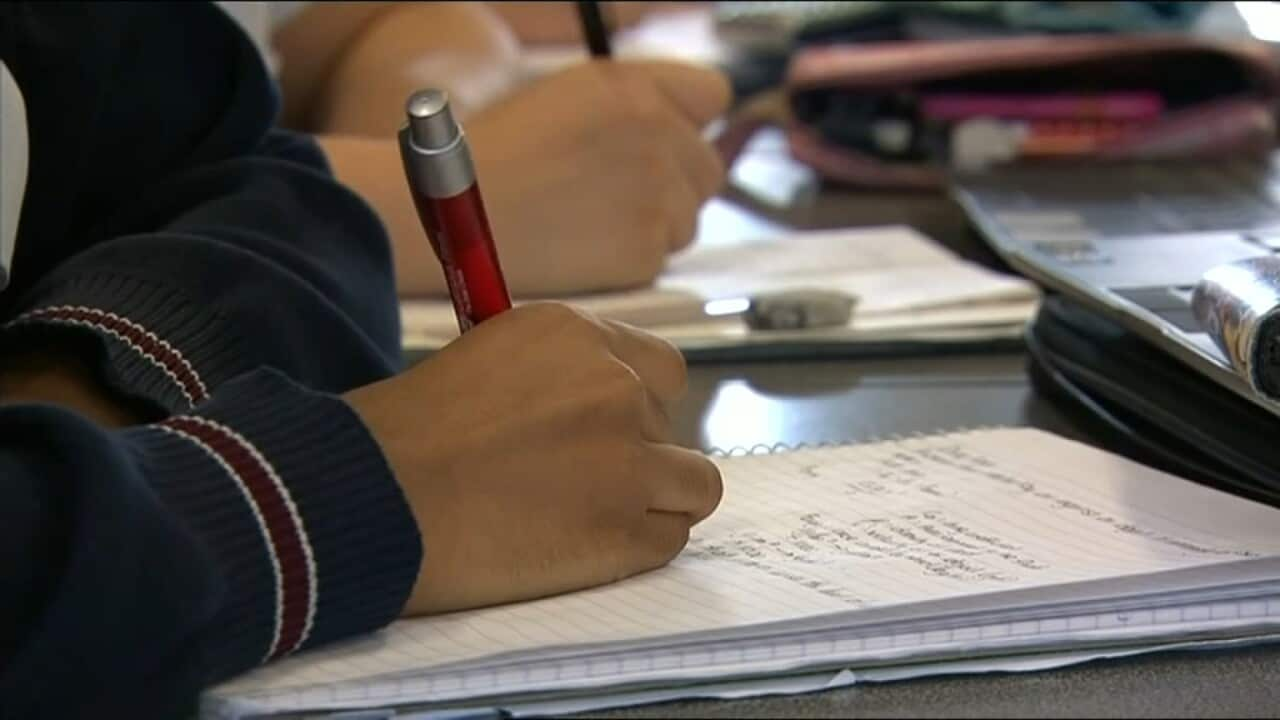TRANSCRIPT
As children prepare to return to school, teacher shortages are persisting across the country.
New report reveals that many schools are struggling to fill full time and casual roles.
With New South Wales being the hardest hit, other states and territories are also in severe need of more teachers.
As a result, thousands of retired teachers like Terry Moriarty are being called on amid a critical workforce shortage across primary and secondary schools.
"That hasn't happened at the start of the year before. The teachers that I know are sort of a bit like me that we are not surprised but we're still getting asked whereas we thought that perhaps by now we would have reached our years by date."
Terry Moriarty retired in 2008 after over 50 years as a maths teacher.
The 75-years-old has had to go back to the classroom as a casual teacher to help out.
"I've been asked to sit in the library with another teacher and look after three or four classes in the library and walk through the hall and see it's set up, to take four classes at a time with a couple of teachers when things get critical so that's been ongoing for the last couple of years."
The report finds that almost 2,000 full-time teaching positions were left unfilled in NSW classrooms at the end of last year and 10,000 classes across the state had to be merged or cancelled.
In regional areas, the shortages are far worse.
Research released by the e61 Institute highlights significant disparities in access to high-aptitude teachers in New South Wales high schools, finding they were less likely to work in disadvantaged areas.
Crucial subjects such as maths, English and science are reportedly missing the mark, with disability educators down by 500 in New South Wales public schools alone.
And 175 high schools are currently looking for English and maths teachers.
Judith Wood, a full time public school teacher in New South Wales says she is surprised at the state of things.
"I have never seen anything like it in my 39 years of teaching in 25 or 26 in Australia where I am seeing early career, mid-career and late career teachers making the decisions leave the profession or leaving their permanent roles and maybe just taking on a few casual days because they are feeling the stress to such a great degree that it is impacting on their health and well-being."
These days, exhaustion is a common complaint among educators.
Victorian teaching student Chelsea Roberts says she could see teacher burnout during her recent placement in regional Victoria.
"Call it naive but we're going with all these hopes and dreams and if you've got a mentor who's burned out, you can see how they've got to that point, but it's It's made me think, you know, when I get into this profession, will it take over my home time? Will it, you know, we'll have all this extra work to do because roles aren't being filled."
Teachers in New South Wales received a payrise last year, becoming the best paid in the country.
There are also Federal scholarships, grants and HECS debt discounts on offer to make teaching more attractive.
But Federal president of the Australian Education Union Correna Haythorpe says more needs to be done.
"Many teachers are saying enough is enough - I can no longer work 56 hours every week.. and the complexity of student who are not being provided with the support they need are increasing."
A spokesperson for the Department of Education says efforts are underway to ease the situation.
“Australia does have a shortage of teachers that has been 10 years in the making, and it will take time to fix. Pay is part of it, but so is workload and so is teacher training. The National Teacher Workforce Action Plan was agreed to by Education Ministers and includes $337.3 million in federal funding for extra university places, scholarships and a national campaign to elevate the teaching profession, which we launched last year."













